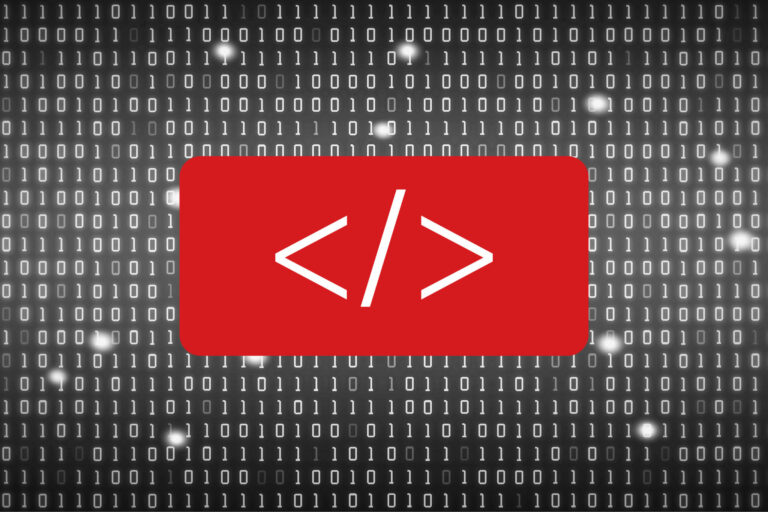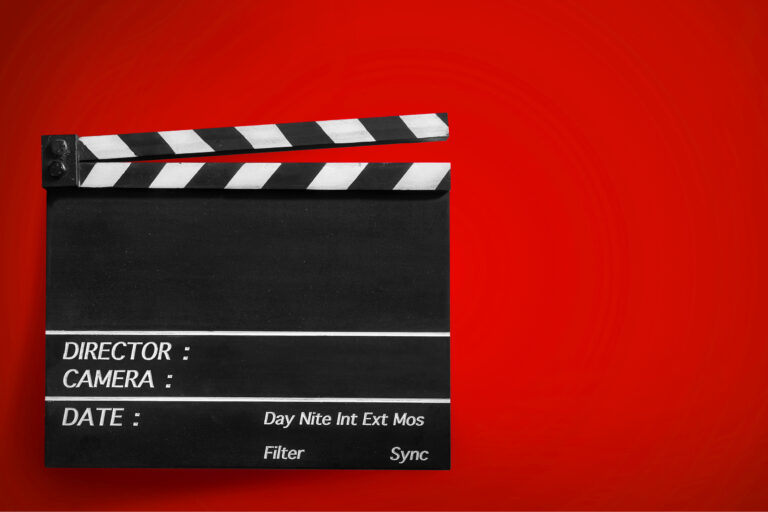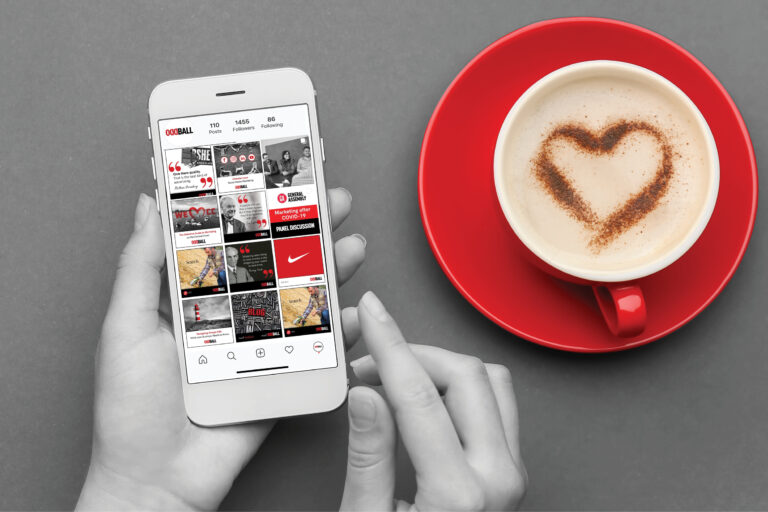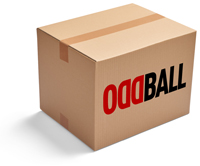Marketing pundits have been predicting the death of email for decades…
But like a plucky little 2002 Camry Sedan that’s about to tick over 300,000kms, it just keeps going. In fact, there are currently 293.6 billion emails sent daily, not bad for a ‘soon to be obsolete’ platform.
Just like that car, it may not have been flashy, it may not have been your first choice, but it was cheap, reliable, got you from A-to-B, and may just have been the best car you’ve ever had.
Email marketing is the old Camry of the marketing world, and it’s about time it got recognised for what it is – an absolute hidden gem.
What is email marketing?
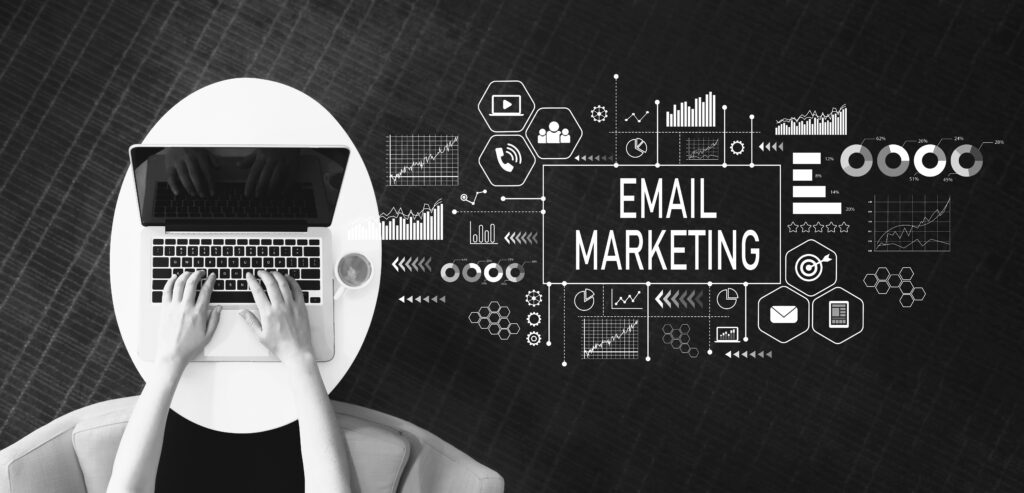
It may seem a bit ridiculous to say that email, a cornerstone of digital communication that pre-dates the internet itself, could be a ‘hidden’ gem. But it’s true; emails have become routine.
Other platforms like social media have taken the focus off email, but the reality is, most other platforms carry far more risk, and potentially deliver a lower return on investment (ROI).
The first golden age of email marketing
The first email was sent in 1971 by Ray Tomlinson using a United States military network called ARPANET. Ever since then email has evolved in efficiency and purpose, and managed to remain useful on various networks including the internet as you know it today.
In 1978, marketing manager Gary Thuerk sent the first email ‘blast’ to 400 machines, which generated $13 million in sales. This was a lot cheaper than physically sending printed materials to their customer’s home addresses, and generated a lot more money!
This was the start of the first golden age of email marketing. Startling ROI’s were a game-changer, and email today is still known to be a low-cost, high-reward strategy.
Waning relevance?
Email’s relevance is often considered to have waned with the rise of phone networks and social media alternatives – people forgot about their poor old Camrys and started to eye off fancier alternatives. The truth is email never went away, it just fell out of focus.
Email holds the sweet spot between not being too invasive, while also reliably hitting consumer’s inboxes.
Phone calls and SMS’s are very direct. You are almost guaranteed contact with your consumer, but you are making them talk to you on your terms. Most people think of a mobile as an extension of their personal life, and don’t expect or appreciate a business call.
Phone calls are the roaring engine of V8 in a residential street. Everyone will notice it, but they may not like it.
Organic social media has the opposite problem. If consumers are interested in your content they will interact with it, but if not over time the algorithm will filter it out.
Social media posts are like a flashy motorcycle. When you see it, you’ll be impressed, but if you don’t it could easily slip into one of your blindspots.
Consumers expect emails to be business or sales related, and they can read them at their own leisure. This lessens the feelings of intrusion compared to SMS. You can also be sure that if you’ve sent it, they have had to at least read the subject line before deciding to delete it. This guarantees more exposure than a social post.
Like we’ve said, email marketing is the reliable ol’ Camry of the marketing world.
The new golden age of email marketing
COVID-19 has changed the way people feel about email marketing in a big way. Supply and demand, consumer trends and marketing channels all changed in unprecedented and unpredictable ways.
One thing that emerged was an appreciation, a craving even, for stability. With customers shopping online and business representatives being unable to meet face-to-face, marketers needed to find a different way to connect with potential consumers. They also had to find a way to stay top of mind for their existing customers.
Another thing was a desire for connection. Lockdowns kept people apart, and they looked to technology to bring them together again. Emails can be more conversational and personalised than other channels.
Email marketing is the platform to fill both of those voids.
What are the strengths of email marketing?

Email marketing strengths differ depending one what kind of consumer you are targeting. However, there are some general benefits.
You know they have shown an interest
The first step of email marketing depends on one crucial step…getting your potential consumer’s email address!
Whether you get it because they bought a product or service, registered their interest on a landing page, or clicked the ‘Contact Us’ in a blog, they all have something in common. You know that they have shown an interest in you.
From this point forward, a prospective customer becomes a lead. For more information on leads and how to nurture them, read our article on lead nurturing.
Privacy concerns eased through consent
When a lead has willingly provided you with their email address, there are two ways they might react when they get their first email from you. They could be mildly irritated that their address has been added to a subscriber list, or pleasantly surprised that you have responded to their interest.
Other marketing channels target based on behaviour. Maybe someone was genuinely interested in your shoe product – or maybe they just clicked on a Facebook ad about shoes because the location in the picture looked interesting. Now they are annoyed because everytime they scroll their feed they are flooded with irrelevant content.
The problem is, they can’t opt out of what the algorithm displays. They just have to keep scrolling and avoiding the ads, hoping that they go away.
If your consumer falls on the mildly irritated side of the fence, they probably didn’t realise that by providing their address they became a subscriber. Even if that’s the case, they still provided their address for some reason, so they won’t be completely disinterested in what you’re offering.
It is now up to your content to convince them. If you fail here, they may unsubscribe. Interestingly, most people won’t go to the effort of unsubscribing after a single email. The fact they have the choice will make them more tolerant of your content. This means you have multiple emails to hook them before they give up on you.
Perfect length content for getting (and keeping) your reader’s attention
Now that you have a lead’s interest, it’s time to get their attention.
Email subject lines are perfect for hooking readers. They give you a chance to stand out in the inbox without the lead committing to opening the email. The fact they don’t feel pressured to open it ironically means they will be less preemptively critical of its message.
Unlike a social post, which is brief enough that the caption is the message, subject lines just need to be enticing enough to be opened. A killer subject line is the key to high open rates.
Once your subject line has a lead hooked, the content of the body of your email should reel them in. In blogs, it can be a real struggle for a writer to maintain a lead’s interest throughout a piece. A well-written email, on the other hand, should tell a full, captivating story in a couple of paragraphs.
With the two-pronged attack of the subject and the body, high quality emails can have excellent open and click-through-rates (CTR).
Manual is out, auto is in
Once you’re happy with the quality of your content; consider automation. It’s getting a lot easier to automate emails nowadays. Whether you are sending large bursts or smaller, targeted batches, automation reduces the cost and effort of email marketing even further. This boosts the already favourable ROI of email marketing.
You can tailor your release window for specific audiences
Email marketers who take the time to understand their audiences have the most successful campaigns. For example, if you are marketing to businesses, avoid Friday afternoons and Monday mornings. You’ll find people are much less likely to want to read your content at the beginning and end of the week.
The last thing you want is for your email to be part of an inbox-wide cull because your reader ran out of coffee halfway through the day.
Similarly, if your audience is spread across different time zones, strongly consider delaying some segments of your audience so that they all receive the email at the desired local time.
58% of adults check their emails first thing in the morning, so sending your emails between 7-9am is a good starting point.
Email Marketing specifically for B2B
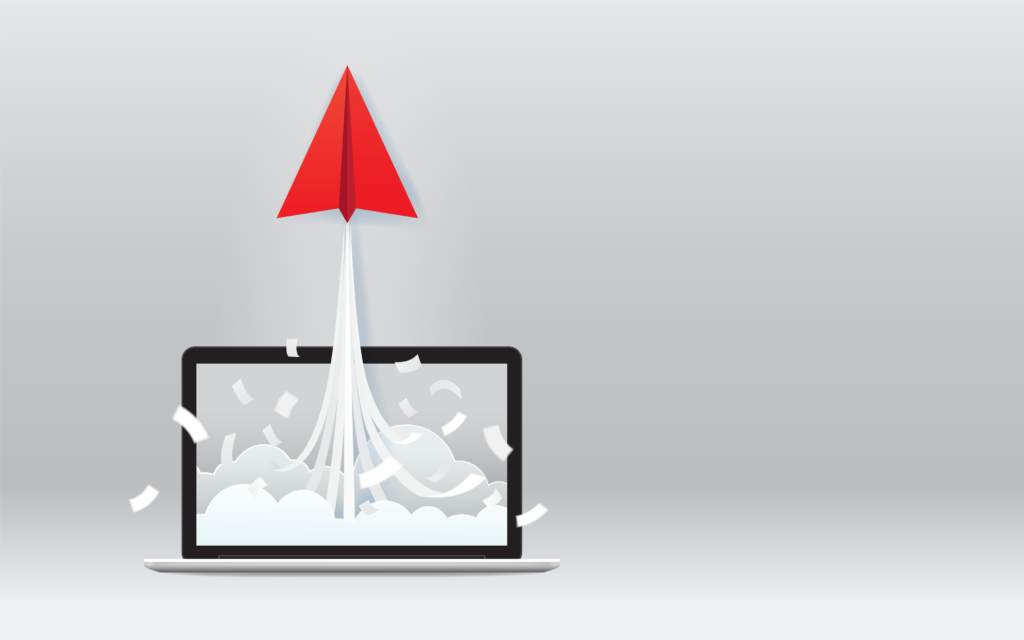
At this point we are going to make a distinction between B2B and B2C marketing, as this article will be focusing primarily on B2B. But first, you might be wondering what B2B and B2C even mean?
What do B2B and B2C mean?
Business to business (B2B) and business to consumer (B2C) differ in one obvious way. B2B is one business selling a product or service to another, while B2C is a business selling a product or service to consumers.
For example, a second hand car dealership selling a Camry – yep, we’re still on the car thing – to a customer would be B2C, while us offering our marketing expertise to that dealership would be B2B.
How are B2B relationships different to B2C relationships
First of all, as marketers, it is vital that we show customers the utmost respect, and try to add value to our interactions with them as much as we can.
This isn’t just best business practice, it is also important ethically. With that said, you can afford to make certain assumptions when considering a B2B customer, versus a B2C customer.
B2B customers already have knowledge of their field. Speaking to them as peers is a reasonably safe option that creates a relationship of mutual respect.
On the flip side, this doesn’t mean you should treat B2C customers like idiots. However, you do need to assume that they aren’t aware of their problem, or how you could fix it.
Instead of dialling in on awareness, B2B marketers should focus on building credibility and loyalty to help negotiate a sale, and increase the likelihood of repeat sales.
B2B relationships tend to be longer term
Leads in B2B tend to take longer to progress through the buyer’s funnel than customers in B2C marketing.
This is because the prices of services used on a business scale are more expensive, which means the risk of choosing wrong is higher. It can also be because more than one person may be involved in decisions. Common examples are disagreeing board teams or a manager versus an owner.
It’s worth mentioning that email marketing is a great tool for dealing with group leads. You can Cc the appropriate people so that they are all receiving the same information at the same time. This stops members feeling like they are being cut out by getting late, or second-hand information.
Retention Marketing
Acquisition marketing, the act of influencing demand for a new audience, is what most of this article has been about so far. Where email marketing really stands out from the crowd is retention marketing. Retention marketing is influencing your current or past customers to purchase again.
Businesses are more likely to be offering services, rather than single use products, to each other. This means entering into a retainer relationship, or an ongoing repeat purchase arrangement, could create a decades-long nurturing process.
Email marketing is ideal for repeat customers or ongoing clients because you already did all of the hard work during the acquisition phase. All the client needs is an occasional reminder of your existence, or some genuinely useful information and resources.
Creating an email newsletter for your consumers is a great way to kill two birds with one stone. You continue to establish yourself as an authority in your field, while making sure if a problem crops up your business will be fresh in their mind . To learn more about newsletters, read our detailed guide.
Email marketing basic rules – content

So you’ve decided to create an email campaign…fantastic! But what do you actually write? Well, there are some rules to email content that will seem obvious when you read them, but are often overlooked by email writers.
The content must be enjoyable
When we say enjoyable, we don’t necessarily mean that it has to make your audience burst into laughter (although there definitely isn’t anything wrong with that). Be clever, be witty. Use literary techniques, like puns, imagery, or even overwrought car motifs, to quickly engage your reader.
If someone enjoys your email, they are far more likely to open the next one.
The content must provide value
For consistently high open rates, your readers need to know that they are going to get something beneficial out of your email. Pivot away from being too ‘salesy’ because your readers will think of your emails as spam. Instead, aim to be informative by offering:
- links to news related to their field
- how-to guides
- notice of changes to your business
- seasonal or event related updates
- case studies, recognitions and testimonials
Giving information for free isn’t making your customers need you less, it’s establishing yourself as a trustworthy source of support for when they do need you.
Call to action
Include a call to action, every. single. time! If your email doesn’t have a call to action link, you are expecting your audience to find your contact page for themselves. They aren’t going to take that step, that’s what you’re here for!
Subject lines with a purpose
We touched on this earlier, but in the context of B2B it is worth emphasising that the purpose of a subject line changes depending on the stage of the relationship.
In the acquisition phase, your subject line can afford to be more enticing. The lead isn’t obligated to read it, so you are trying to hook them.
If the relationship is in the retention phase, make the subject line more descriptive of the email content. You aren’t trying to establish your brand. Your client already knows who you are. Describe the value that the email is going to give them.
If your email is communicating an action that your clients should complete, like suggesting upgrading to a new direct domain, clearly sign post that an action is required in the subject line.
For example: ‘New domains have arrived – upgrade now, don’t miss out!’ versus ‘New domains have arrived – read here for more details’.
Which one communicates more urgency and a call to action?
The first one!
But that was pretty obvious…almost rhetorical.
Rhetorical questions are another great tool in a subject line because once the reader agrees with you, they open the email already expecting to agree with the content.
The body text should be top heavy
Emails need to be brief. No exceptions. Assume your reader has a hundred other emails in their inbox and they are only giving yours a cursory glance. Limit yourself to one short paragraph to hook the reader, then another to communicate all the important information.
The rest of the email can provide context, but honestly, just using links to your site or other resources is the best option. That way, if the reader stops reading at the top, you get your message across, and if they want to read more, you can get a click through to your site.
Participatory and user generated content
Interactivity is always a great option if you want your readers to feel valued and engaged. Some great options are:
- polls
- quizzes
- surveys
- feedback comment requests
- calls for reviews
- star ratings
By providing answers to these prompts, your consumers feel like you care about their point of view. You also get great insight into what they would be interested in hearing about in the future. It’s a win-win.
You can then use this user generated content in future campaigns as social proof. Review snippets or the all powerful star rating are incredible in emails because they can be read and digested quickly.
Email marketing basic rules – design
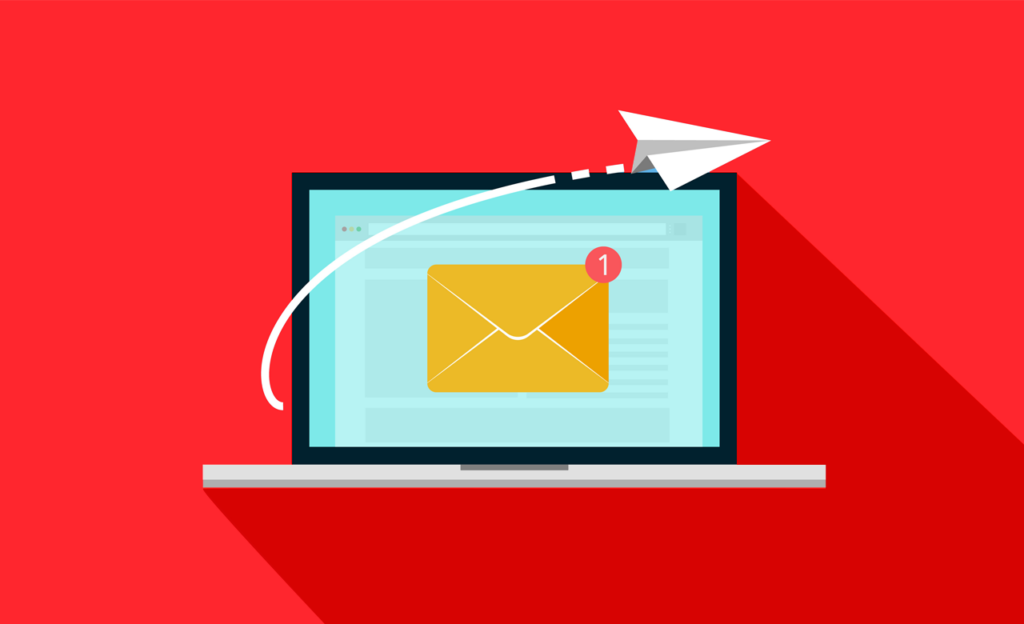
That’s the basics of content covered. But what about visual design? What are your options? Is plain text okay? Or should your emails be packed full of derivative black and white gifs? The answer is…it depends.
Plain text or HTML graphics?
Generally, plain text is better for communicating a message. It comes across as a personal communication (like an SMS), and therefore evokes feelings of familiarity with the reader.
On the other hand, graphic-laden HTML emails can be visually striking and have a ‘wow’ factor. The problem is they may set off alarm bells in a reader’s mind because the email looks too professionally made. This makes them more suited for sales emails.
For B2B retention marketing, remember that you don’t necessarily need to ‘sell’ to your audience anymore. Plain text will feel more personal, like a business partner style relationship, rather than a transactional one.
The definitive answer is that there is no definitive answer. You know your audience, and you have a brand identity that you want to get across. Run the numbers, and adjust your strategy based on your readers’ responses.
Emails should open/load quickly
If you have decided to make your email a visual extravaganza, just remember one thing – if the email takes too long to load, most people won’t hang around. The view from Mt Everest is probably pretty great, but there aren’t many people who have the endurance or the patience to see it.
To make sure your emails open quickly, be aware of these considerations:
- if you add too many images, your email open speed will eventually slow down
- save images locally and then embed them – if they are hosted on a search engine your email will open slower while it waits to retrieve them
- make sure your file sizes aren’t too large
- make sure your images are saved as .jpeg
Images are awesome for boosting engagement, but just remember that sometimes less is more.
Also, in B2B, your target audience are business owners themselves. They are probably getting more emails than an individual consumer and will be even less tolerant of wasted time.
Check for mobile optimisation
More than 46% of email users access their inbox on their mobiles. This means that if your email isn’t mobile-friendly, you are turning away half your customers. Most email building services will allow you to switch between desktop and mobile view.
There should also be an option to send a test email. If not, just send it to yourself manually. That will let you see it on your mobile the way your audience will see it on theirs.
If an email that looks good on desktop appears poorly formatted on mobile, you must fix it. 70% of mobile email users delete poorly formatted emails in just three seconds.
Test your links
This one is simple, but probably the first corner you’ll cut if you are pressed for time. Skipping this simple step is a rookie mistake. Always test the links that you embed in your email. If someone clicks a broken link, you will seem unprofessional, and they will miss out on the information at the other end.
Newer trends to consider when email marketing

Now that we’ve covered the basics, there are some exciting new possibilities on the horizon.
Further audience segmentation
Automation is saving time spent on constructing emails. While the temptation may be to reinvest that time into other channels, consider micro-segmenting your audience instead.
Detailed reporting on consumer habits, behaviour and interests has never been more comprehensive. Consider the following categories:
- location
- age
- gender
- occupation
- repeat purchases
- time taken to read emails
- CTR
- average purchase amount
This list is just the tip of the iceberg. The full range of information categories is practically endless. The further you dig down into them, the more personalised your emails can become. If readers resonate with your content, they are more likely to open your emails.
Artificial Intelligence (AI)
AI is a relatively recent development in the marketing space, but its impact is already being felt.
Tasks that could become assisted by AI include:
- mailing list management
- data analysis
- statistic compilation
- performance prediction
- ideal transmission time prediction
This is far from an exhaustive list; AI develops exponentially so more functions are becoming possible all the time.
AI might not be something you need to integrate now, but keep your eye on it. It will definitely be a vital part of the future of email marketing.
Augmented reality (AR) and virtual reality (VR)
AR and VR are the future of interactive email content. At the moment the most common examples that you might have come across are embedded 3D YouTube videos or QR codes that lead to AR apps.
While these examples may seem gimmicky, the future of VR will truly transform email marketing forever.
Experiences like taking a car for a virtual test drive, or virtually inspecting a rental property, are already being rolled out. Rather than describing an experience, through your email your readers can interact with it virtually.
Just like AI, these technologies are probably still a few years away from being commonplace, but they are definitely something to keep in the back of your mind.
Are you ready to subscribe to the email marketing comeback?
The second golden age of email marketing is well underway. If you are currently email marketing, contact our team of experts for strategic advice. Or if you’d like, we can look after your email campaigns for you.
If you aren’t currently email marketing, don’t trade in that Camry just yet! Let us tune it up for you. We can learn your brand and your audience, and get started on a modern email marketing campaign that will keep you competitive in the future.
Resources
For more information on email usage, particularly on mobile, feel free to check out the links below.
- email usage: https://99firms.com/blog/mobile-email-statistics/#gref
- email usage on mobile: https://99firms.com/blog/mobile-marketing-statistics/



